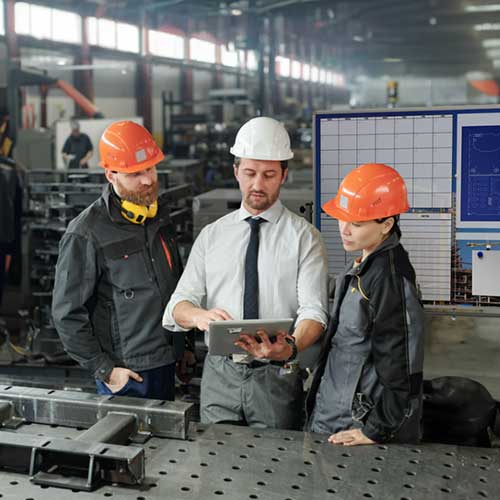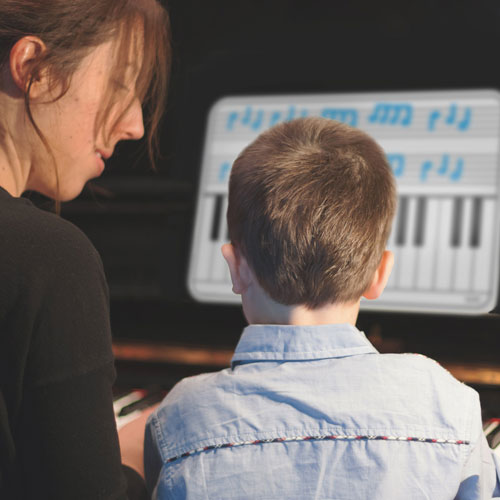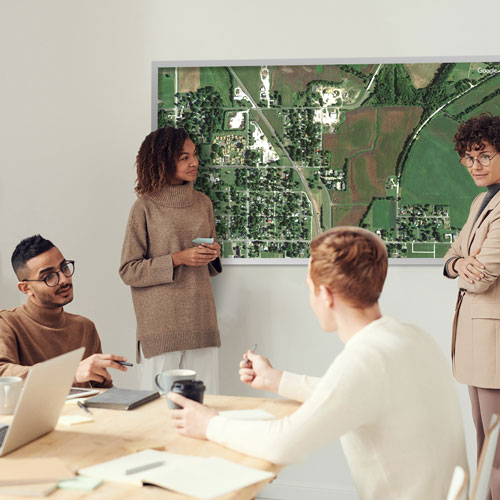
What is a Collaborative Workplace?
 Collaboration encourages freedom, creativity, and the integration of thoughts from many perspectives within a workplace. A collaborative workplace can take many forms, from formal locations made for group work to informal social spaces that allow staff to congregate in a natural, relaxed way. The core purpose of these spaces is to encourage discussions, teamwork and enable collaboration that allows for a thriving work environment.
Collaboration encourages freedom, creativity, and the integration of thoughts from many perspectives within a workplace. A collaborative workplace can take many forms, from formal locations made for group work to informal social spaces that allow staff to congregate in a natural, relaxed way. The core purpose of these spaces is to encourage discussions, teamwork and enable collaboration that allows for a thriving work environment.
Why Collaborative Spaces?
Collaborative Spaces have been shown to increase workplace productivity by 15% through encouraging teamwork, group interactions, brainstorming, and creativity. Shared spaces allow increased communication, heightened staff morale, positive workplace culture, and better staff retention. A collaborative space's primary purpose is to facilitate discussion that creates connections between the workplace and employees. Regardless of the size or location of your workplace, it is a crucial part of creating a functioning and thriving work environment in the 21st Century.
How to Create a Collaborative Workplace
The main priority of creating a collaborative workspace is knowing your organization's primary purpose and goals. When planning, ask yourself: How do you see employees using these collaborative spaces? How many people can be in this location at a time? What will the collaboration be focused on? What do your employees need to succeed in collaboration? The collaborative space you create should be designed to reflect your organization's vision and the goals you aim to achieve. If you are looking for employees to encourage informal and casual collaboration, you should create a space that encourages casual or natural interactions to be created.
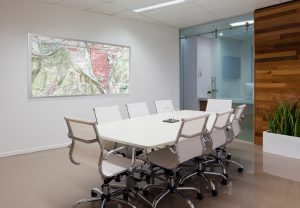
Collaborative spaces do not have to be entirely new locations for your organization's building; these spaces can be transformed from locations that are not being used to their fullest potential. This can be achieved in simple steps that change your workplace into a prime collaborative location, starting with getting rid of walls. Walled rooms offer little flexibility that restricts employees in one space mentally and physically, resulting in a lack of stimulation. Removing any physical barriers allows staff to have more freedom in their work and find themselves more productive.
Studies have found that 16% of lost time in offices results in employees looking for functional collaborative spaces in their workplace. This can easily be solved with flexible, moveable furniture such as rolling chairs, round tables, or flexible seating options. They are suddenly transforming a limited space into one that can be flexible and catered to fit the needs of individuals throughout the workplace.
When decorating these locations to accommodate collaborative thinking, you should consider your options wisely. Simple things such as vibrant colors, exciting textures, and decentralized furniture allow for more creativity versus white walls and stuffy conference room-style furniture. Creating multiple collaborative spaces allows for various interactions, allowing for the maximum potential for social gatherings. This can be done with wide-open spaces or huddle rooms; huddle rooms can include a mix of tools such as whiteboards, computer screens, books, and flexible seating options.
When designing a huddle room, a wide variety of tools can be used, but one of the most important tools is definitely the whiteboard. They can be customizable to your organization's needs, such as magnetic whiteboard walls. If you want to learn how to get magnetic whiteboard walls for your organization, visit our Magnetic Wallpaper Selection. For those who want other options, we also have customizable boards or traditional whiteboards available. When designed correctly, huddle rooms can be used for group gatherings, brainstorming, discussion, and creativity to thrive.
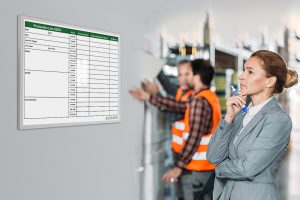 Finally, the use of collision rooms allows for natural interactions as workers gather in this space for breaks and meals. Employees will run into each other in these spaces prompting interaction as they relax, recharge, and connect with their team organically, resulting in spontaneous idea generation. These collision rooms allow employees to relax without their work but create meaningful interactions within their workplace social circles.
Finally, the use of collision rooms allows for natural interactions as workers gather in this space for breaks and meals. Employees will run into each other in these spaces prompting interaction as they relax, recharge, and connect with their team organically, resulting in spontaneous idea generation. These collision rooms allow employees to relax without their work but create meaningful interactions within their workplace social circles.
In today's modern world full of technology, there is a growing appreciation for simple human interactions. Workplace collaboration is at an all-time high, resulting in people coming together to generate ideas, innovation, and problem-solving more than ever before. The implementation of collaborative spaces can elevate workplace productivity and employee retention.
Why Choose OptiMA?
We are a small business making our products in the USA. We specialize in dry erase boards, dry erase wallcoverings, portable dry erase units, high-quality custom printed whiteboards, fast shipping, and five-star customer service. Over the last three decades, we've worked hard to deliver industrial quality whiteboard solutions that won't break customers' budgets.
Sources:
- “The Rise of Collaboration Spaces in Offices, and How to Create One .” Tinto Architecture, https://www.tintoarchitecture.co.uk/blog
- “Office Fit-out: How to Create a Collaborative Workspace.” AIS, 16 Nov. 2021, https://www.ais-interiors.com



